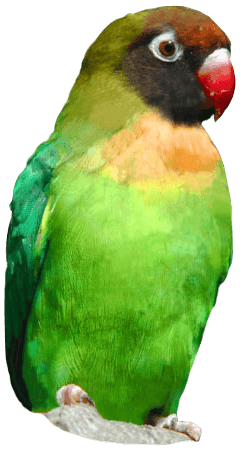
All About Sloths
In this piece we give Sloths the x-ray and find out some fun and unsual facts you may or may not know about these wonderful creatures.
Our resident Linne's Two-Toed Sloths are called Sophocles & Sidone who are classified as common. They reside in the northen rainforests of South America and they spend most of their time upside down in trees. They have two toes on their front feet and three on their back. But that's just our sloths; below we have some interesting facts about Sloths generally - do any of them come as a suprise to you?
- A Sloth's body has developed a deep groove (due to it's thick hair) which acts as a potential ecosystem for several species, notably algae. This can turn parts of the Sloth's body green and can help camouflage itself in the rainy season. Moths have been found to feed off the algae and even hide within the grooves to protect itself from predation.
- Sloths are very able swimmers! They can move up to three times as fast in the water than they can on land and can hold their breath for up to 40 minutes! (https://www.youtube.com/watch?v=kMe2UvPS4vI) via Youtube and BBC.
- Sloths only go to the toliet once a week due to their very slow metabolism. When they do, they travel all the way down to the forest floor to defecate and urinate (often in the same place!). See the top video via YouTube and BBC Earth.
- According to experts, Sloths can travel up to two metres per minute along the ground and three metres per minute in the trees. This speed is unlikely to escape predators such as Jaguars, Eagles and Snakes but their arsenal comes from slashing, biting and shrieking.
- A Sloth's diet in the wild is made up of leaves and vegetation. This provides them with little to no energy/nutrition which explains their slow movement. Energy conservation through slowing their metabolic rate and lowering their temperature is crucial for their survival.
- Lastly, the Sloth family is extremely old. Megatherium was an elephant-sized, ground-dwelling sloth that lived in the Pilocene era (5 million years ago). They shared the floor with Mammoths and Sabre-Tooth Tigers but were entirely herbivores.
Safe to say that these creatures are truly wonderful habitants of our planet. We're fortunate at Drusillas to home two beautiful sloths who love their enclosure and the keepers that work with them. In the wild, some species face extinction due to habitat loss but on the whole they are a very successful family group. Our sloths are located in our walk-through bat enclosure so be sure to come and say hello when you next visit.
(Both videos are owned by the BBC. Drusillas Park does in no way own the rights to these videos)




